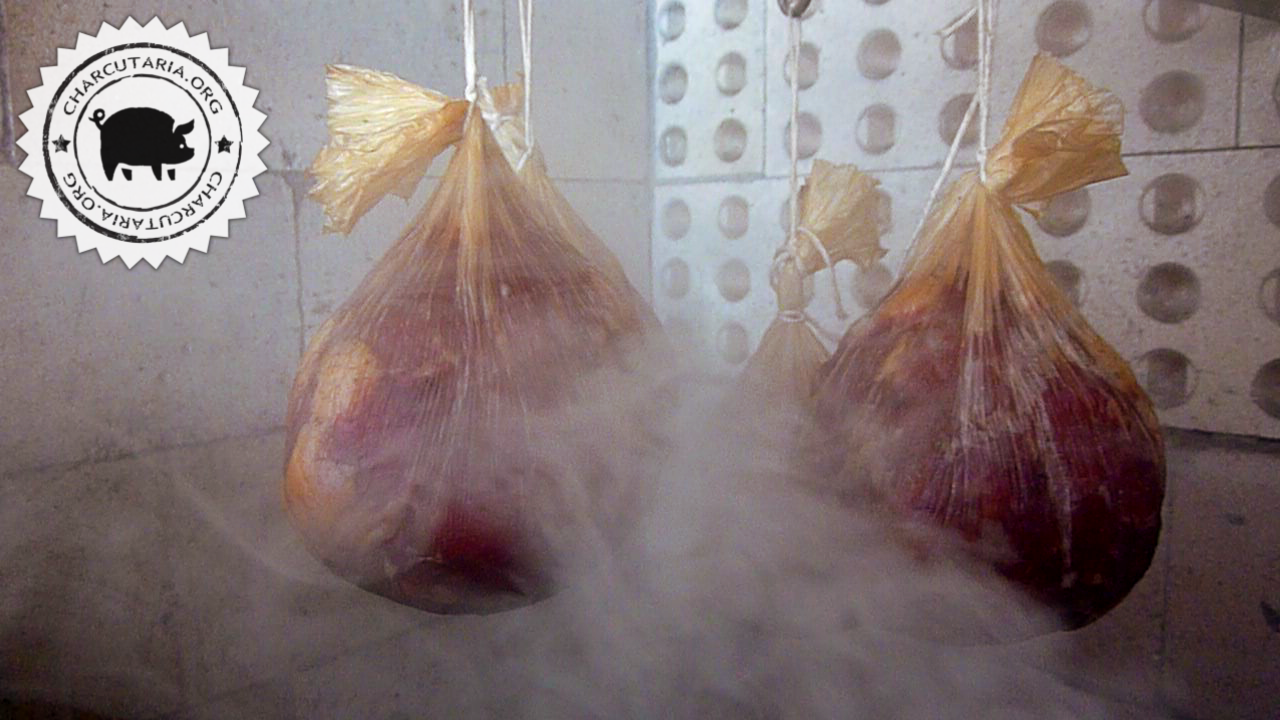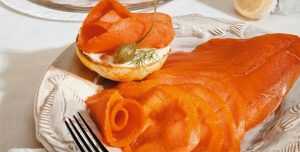
Cold smoking is a process that smokes meat without exposure to heat, generally at temperatures below 32°C. Unlike hot smoking, this process can take days or weeks to complete, and tends to result in drier, saltier foods.

The long-smoking process produces a complex flavor, but it also requires much more careful work, as the perfect conditions for cold smoking are also ideal for promoting bacterial growth. It is also difficult to carry out in hot climates, which is why the process tends to be done more frequently in winter and in colder regions. This technique is widely used in Scandinavian nations.
During this smoking process, smoke is normally generated in a chamber separate from the meat and passed through tubes that cool the smoke before it reaches the meat. Typically meat is kept at close to room temperature and in relatively dry conditions. To obtain more intense meats, the smoking time is extended, while some prefer to smoke for short intervals to obtain just a hint of flavor.
Most people don't know it, but cold smoking doesn't actually preserve the food or cook it, so it's essentially a raw product that requires refrigeration. Since cold smoking technically does not cook or extensively cure the meat, a direct brine or salting is usually applied first. Then, a curing period is allowed – normally 12 to 24 hours in the refrigerator – and then the meat is rinsed to remove excess salt. Salting hinders bacterial growth while the meat is smoked and stored. Some foods, such as smoked salmon, that are typically prepared this way tend to be a little saltier than those using other smoking techniques.
Cold smoking is normally only done in winter, when temperatures are colder and more controllable. On hotter days, the smoking temperature may rise, putting an end to the process. In extremely hot climates, such as Brazil, it is much more difficult to prepare meat using this method, as temperatures remain cold in specific regions for short, unpredictable periods. Excess heat can also result in rapid putrefaction, spoiling the product before slow smoking can effectively be applied to the meat.
Because the meat is not cooked, it tends to have a characteristic smooth texture that often resembles that of raw foods. Smoke does not fully preserve food, so it must be kept refrigerated until used, and expiration dates must be carefully observed. Some cold-smoked foods must also be cooked before using, especially if they have been lightly cured, as is the case with bacon. Others, like Black Forest ham, can be eaten raw as long as they are well preserved.




When should cold and hot smoking be used?
Cold smoking is used on products that do not require cooking during smoking. Salami smoking is an example, as salami needs to be matured, not cooked, cold smoking only adds flavor and protection.
Hello Eduardo, good evening.
Following the instructions from charcutaria.org, I make Coppa at home and also Minas Padrão cheese and/or Parmesan.
I'm thinking about starting to cold smoke these two products.
Is it possible or is there a problem?
Thank you in advance for your return.
Luiz Carlos
Hi Luiz Carlos. Yes, it is possible, for coppa, salami and cheeses, cold smoking is ideal as there will be no heat, therefore there is no risk of altering the original characteristics of these products.
Edward.
Thanks for the info.
Abs.
Luiz Carlos